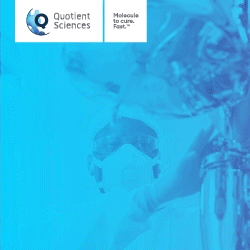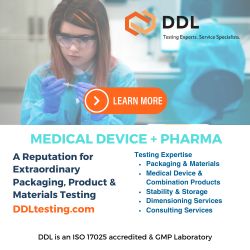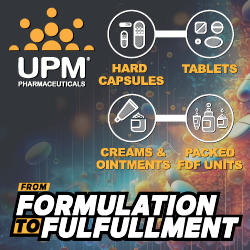Anti-Properdin Antibody Demonstrates Efficacy in a Primate Model of Wet-AMD & Dry-AMD
NovelMed Therapeutics recently announced NM3086, the lead clinical asset in its Properdin-associated Alternative Pathway (AP) program, demonstrated favorable efficacy in an animal model of neovascular age-related macular degeneration (AMD) in rhesus monkeys. This animal model is characterized not only by the abnormal growth of new blood vessels behind the retina, as shown in Figure 1, but also by retinal fibrosis and vascular hemorrhage, which are the critical characteristics of Wet-AMD, Dry-AMD, and GA. While it is difficult to extrapolate the visual acuity score in animals, the damage prevented by NM3086 in this model suggests the drug’s efficacy in treating the disease.
Figure 1: Fluoresceine angiogram data from three animals treated with NM3086 (bottom) and three that received placebo control. The picture shows reduced hemorrhage and neovascularization (Left) and Fibrosis (Right) in the drug-treated animals.
Scientists of Charles River Laboratories established a preclinical Choroidal Neovascularization (CNV) efficacy model in rhesus monkeys. This study administered NM3086 (1.2 mg/eye ) intravitreally to monkeys before creating nine laser-induced retinal lesions. Following a two-week observation period, choroidal neovascularization (formation of new blood vessels), retinal fibrosis (scar tissue), and hemorrhage (vascular leakage) were quantified against a placebo control. NM3086 resulted in a significant decrease in the extent of all three damage markers. “This All-in-One approach in ophthalmic space is a significant achievement for treating multiple ocular chronic ailments with a single therapy,” said Dr. Bansal of NovelMed Therapeutics.
AMD is of two main types: “Wet” and “Dry.” In the Wet form, abnormal blood vessels (choroidal neovascularization or CNV) grow under the retina and macula. These new blood vessels then bleed or leak fluid which causes the macula to bulge and distort central vision, resulting in rapid and severe vision loss. Approximately 10% of the total AMD cases have new blood vessels and leakage interactions, categorized as Wet-AMD. The Dry form (non-neovascular AMD) does not involve fluids from blood vessels; cases of this form are known as geographic atrophy (GA). GA is a chronic, progressive deterioration of the macula that affects ~1.45 million people in the United States and over 8 million people worldwide. The incidence of GA is expected to rise as the age-related disease burden of developed countries increases. The AP activation is essential to AMD pathogenesis of both types. It is well-accepted that excessive activation of the AP is a significant cause of the illness in both Wet- and Dry-AMD, including GA. Preventing tissue damage and excessive inflammation requires complete shutdown of the Alternative Pathway. A therapy that can prevent excessive activation of the AP would prove to be a blockbuster treatment for Wet AMD, Dry AMD, and GA.
NM3086 selectively binds Properdin and blocks the AP activation. As a result, the formation of C3 and C5 convertases is blocked. In general, the C3 convertase converts C3 to C3a and C3b, while the C5 convertase converts C5 to C5a and C5b. C3a and C5a are potent inflammation-causing agents which activate a variety of cells. Activated cells release pro-inflammatory molecules such as tumor necrosis factor alfa (TNFα), vascular endothelial growth factor (VEGF) and other cytokines. The C5b molecule converts into a membrane attack complex (MAC), which damages cells and tissues. This cycle repeats itself until the entire tissue is damaged and gone. This vicious cycle produces excessive levels of pro-inflammatory cytokines such as TNF and VEGF, typically elevated in ocular diseases. The VEGF is known to promote the growth of new blood vessels and makes the blood vessels leaky in Wet-AMD. Anti- VEGF drugs (Lucentis and Eyelea) stop the development of these new blood vessels. These drugs prevent the loss of central vision in Wet AMD, Diabetic Macular Edema (DME), and Diabetic Retinopathy (DR).
As an investigational drug, NM3086 has been extensively studied in various in vitro and in vivo disease models, which prove that the drug: a) blocks AP-driven cellular lysis, TNF production, and VEGF production, and b) prevents neovascularization, scar formation, hemorrhage, and inflammation in animal models. Treatment with NM3086 is specific to the AP while preserving the regular activity of the classical Pathway (CP). Collectively, selective blockade of the AP without impacting the CP will allow patients to maintain host defense mechanisms responsible for preventing infections.
“NM3086 is expected to be therapeutically effective across a broad range of rare and common complement-mediated disorders including ocular (Wet AMD, Dry AMD, and GA), inflammatory, renal, and hematological,” said Dr. Rekha Bansal, Founder, and Chief Executive Officer of NovelMed Therapeutics.
NovelMed is a clinical-stage biopharmaceutical company focused on developing novel biologics for treating a broad range of complement-mediated diseases caused by the activation of the Alternative Pathway. NovelMed is the first Company to have invented and validated an Anti-Bb antibody, an Anti-Properdin antibody, and an Anti-C3b antibody that selectively blocks the AP without inhibiting the classical Pathway. NovelMed has completed a Phase 1 trial for one of its lead product candidates (NCT05642546) and is currently evaluating this product in clinical trials for a) Paroxysmal Nocturnal Hemoglobinuria (PNH – NCT05646524, NCT05646563, NCT05731050), b) Atypical Hemolytic Uremic Syndrome (aHUS – NCT05684159), and c) Complement Glomerulopathy (C3G – NCT05647811). Irrespective of the target protein of the AP, a drug that expresses the best safety and efficacy profile for patients will be finalized for approval.
NovelMed has recently selected lead albumin-linked antibodies designed to have an increased half-life in humans. NovelMed is a leader in developing AP-targeting therapies to resolve debilitating common and rare complement-mediated and complement-associated diseases. In addition to Anti-Properdin, the company is advancing the development of Anti-Bb and Anti-C3b monoclonal antibodies that selectively block activation of the AP in a search for the best-in-class molecule with high potency and an extended half-life.
NovelMed seeks licensing, partnership, and acquisition opportunities to drive NM3086 through further development and approval in multiple rare disease indications. For more information, visit www.novelmed.com or contact them at bd@novelmed.com.
Total Page Views: 1595













